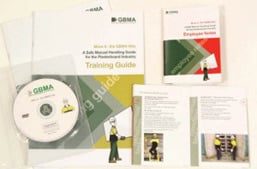Back when I was a kid in the 1980s, I attended one of my father’s business classes that he taught at a University. As an awkward 12 year old, in a class of what seemed...
5 Things Workers Hate about Workplace Safety Speeches
 We've all experienced being at a company speech and feeling our anger grow as the company leader waffled on about a whole lot of stuff we knew wasn't entirely accurate and wasn't based in any achievable reality.
We've all experienced being at a company speech and feeling our anger grow as the company leader waffled on about a whole lot of stuff we knew wasn't entirely accurate and wasn't based in any achievable reality.
Usually these speeches were written with a deluded sense of self and what was really happening.
Fairly recently, I squirmed uncomfortably in my seat when attending a safety seminar and had to listen to absolute nonsense about a so-called safety study which was based on a flawed research methodology with a small sample size of 12 companies. The principal consultant waxed lyrical about the findings, which were all dodgy as the sample size was too small to make any assumptions. Yet, it was enough for a whole range of safety guidelines to be doled out to companies, while my ex-market research brain was writhing around in agony.
But I digress...it's not just companies trying to sell safety information that are at fault. It's also companies talking about their own safety stuff.
Here's a list of top 5 things that the workers instantly feel uncomfortable about when listening to a safety speech:
- No personal connection - We all know this one. The company CEO waltzes into town from his or her interstate or international office and tells us what to do about safety. Yet, their speech shows little understanding about your particular site and no real desire to find out either. The solution is that all company leaders need to make an effort to individually talk to workers and have a personal connection with staff. And if that's not possible, then they need to meet with supervisors before the meeting to find out particular information about that site and get supervisor's input as to what needs to be said.
- No real safety plan - While well meaning, a lot of leaders like to say that safety needs to improve and provide such a vague outline of what that entails that no-one really knows where to start or what to do. There's also no follow-up, but instead general metrics that are either to easy to improve or too hard without proper action steps. For staff to believe any safety speech, it needs to be followed with clear achievable actions and then the leader needs to give regular updates on progress.
- No real concern for employees - This is pretty obvious and it is really glaring when the safety speech omits specific information about that site. It's also pretty obvious when the leader says that safety important, but everyone knows that the safety budget has been cut and you can't get access to safety gloves or proper equipment maintenance. This one is a real doozy for contributing to poor morale and a declining safety record.
- Focus on safety statistics that omit the big picture- Statistics are a funny thing. Just because you've done well with safety last quarter, it doesn't mean that you can assume that you're doing well with safety right at that moment. Most safety stats are out of date, or measure the wrong items or give people a false sense of security. A lot of safety statistics suck (and I'm not just talking about almost made up ones, like my friends the safety consultants like to do).
When we do well, we're likely to believe that our staff, our safety equipment and our safety procedures are the reason why our staff have a good safety record. Psychologists call this fundamental attribution errors.
But another quality that can lead to our downfall is the overconfidence bias. This is when we believe that everything is so good that we don't need to change anything.
In article "Why Leaders Don't Learn From Success" for Harvard Business Review April 2011 by Gino and Pisano, they wrote that what attributes to the downfall of many companies is the failure to ask why syndrome. This is the tendency by humans to not investigate the causes of good performance. Senior teams no longer ask the tough questions which enable understanding of why safety is going well (and therefore, what they should keep doing).
Companies too often believe that their safety record is due to their excellent managerial skills, yet, it could through be through sheer good luck. Success makes us believe that we are better decision makers than we actually are.
Safety stats should be used as a guide that things are okay, but it is not a magical panacea that no more improvements can be made. - Just talking - It's a given that leaders need to have good presentation skills to engage the audience. But even those with great speech giving skills, can believe that just there presence is enough. Unless, they're one of the chosen few doing a TED talk, it's not. Great speeches need engaging visuals or video content to help people remember and understand information. Steve Jobs , the former Apple CEO was a great speaker, but he also used visuals phenomenally well, to tell his story and help people understand information.
When it comes to safety speeches, workers want to know that they are safe at work and they can trust the senior leaders to ensure that safety is a priority. It has to be more than just lip service. People can always see through insincere and inauthentic speeches.
A great safety speech lets people know why safety is important and why they, the employees are important. It's not about the leader taking centre stage and showing off the latest statistics or providing a safety plan so flawed, that it will never work.
When you boil it all down, an awe-inspiring safety speech really signals to workers the level of compassionate leadership and commitment that their leader has for them. And if they can trust their leader, believe the information presented and feel that the plan is achievable , then mountains can be moved.
What do you dislike about safety speeches?

